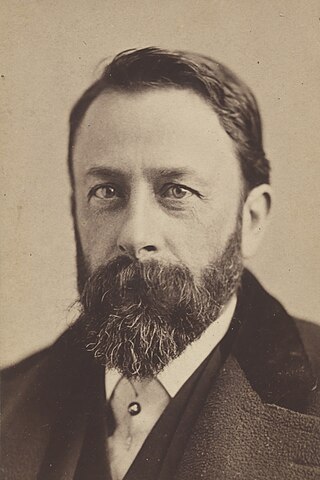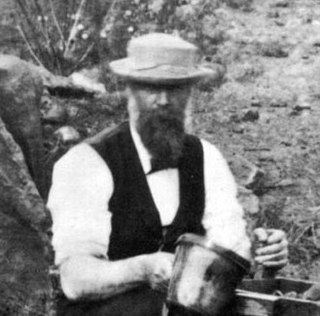
Yosemite National Park is a national park in California. It is bordered on the southeast by Sierra National Forest and on the northwest by Stanislaus National Forest. The park is managed by the National Park Service and covers 759,620 acres in four counties – centered in Tuolumne and Mariposa, extending north and east to Mono and south to Madera. Designated a World Heritage Site in 1984, Yosemite is internationally recognized for its granite cliffs, waterfalls, clear streams, giant sequoia groves, lakes, mountains, meadows, glaciers, and biological diversity. Almost 95 percent of the park is designated wilderness. Yosemite is one of the largest and least fragmented habitat blocks in the Sierra Nevada.

Yosemite Valley is a glacial valley in Yosemite National Park in the western Sierra Nevada mountains of Central California, United States. The valley is about 7.5 mi (12.1 km) long and 3,000–3,500 ft (910–1,070 m) deep, surrounded by high granite summits such as Half Dome and El Capitan, and densely forested with pines. The valley is drained by the Merced River, and a multitude of streams and waterfalls flow into it, including Tenaya, Illilouette, Yosemite and Bridalveil Creeks. Yosemite Falls is the highest waterfall in North America and is a big attraction, especially in the spring, when the water flow is at its peak. The valley is renowned for its natural environment and is regarded as the centerpiece of Yosemite National Park.

Half Dome is a quartz monzonite batholith at the eastern end of Yosemite Valley in Yosemite National Park, California. It is a well-known rock formation in the park, named for its distinct shape. One side is a sheer face while the other three sides are smooth and round, making it appear like a dome cut in half. It stands at nearly 8,800 feet above sea level and is composed of quartz monzonite, an igneous rock that solidified several thousand feet within the Earth. At its core are the remains of a magma chamber that cooled slowly and crystallized beneath the Earth's surface. The solidified magma chamber was then exposed and cut in half by erosion, therefore leading to the geographic name Half Dome.

Ansel Easton Adams was an American landscape photographer and environmentalist known for his black-and-white images of the American West. He helped found Group f/64, an association of photographers advocating "pure" photography which favored sharp focus and the use of the full tonal range of a photograph. He and Fred Archer developed a system of image-making called the Zone System, a method of achieving a desired final print through a technical understanding of how the tonal range of an image is the result of choices made in exposure, negative development, and printing.

John Muir, also known as "John of the Mountains" and "Father of the National Parks", was a Scottish-born American naturalist, author, environmental philosopher, botanist, zoologist, glaciologist, and early advocate for the preservation of wilderness in the United States.

Albert Bierstadt was a German American painter best known for his lavish, sweeping landscapes of the American West. He joined several journeys of the Westward Expansion to paint the scenes. He was not the first artist to record the sites, but he was the foremost painter of them for the remainder of the 19th century.

Carleton E. Watkins (1829–1916) was an American photographer of the 19th century. Born in New York, he moved to California and quickly became interested in photography. He focused mainly on landscape photography, and Yosemite Valley was a favorite subject of his. His photographs of the valley significantly influenced the United States Congress' decision to preserve it as a National Park.

Human habitation in the Sierra Nevada region of California reaches back 8,000 to 10,000 years ago. Historically attested Native American populations, such as the Sierra Miwok, Mono and Paiute, belong to the Uto-Aztecan and Utian phyla. In the mid-19th century, a band of Native Americans called the Ahwahnechee lived in Yosemite Valley. The California Gold Rush greatly increased the number of non-indigenous people in the region. Tensions between Native Americans and white settlers escalated into the Mariposa War. As part of this conflict, settler James Savage led the Mariposa Battalion into Yosemite Valley in 1851, in pursuit of Ahwaneechees led by Chief Tenaya. The California state military forces burned the tribe's villages, destroyed their food stores, killed the chief's sons, and forced the tribe out of Yosemite. Accounts from the Mariposa Battalion, especially from Dr. Lafayette Bunnell, popularized Yosemite Valley as a scenic wonder.

James Mason Hutchings was an American businessman and one of the principal promoters of what is now Yosemite National Park.

Galen Clark was a British North America-born American conservationist and writer. He is known as the first European American to discover the Mariposa Grove of Giant Sequoia trees, and is notable for his role in gaining legislation to protect it and the Yosemite area, and for 24 years serving as Guardian of Yosemite National Park.

George Fiske was an American landscape photographer.

Lafayette Houghton Bunnell was an American physician, author, and explorer. He is most well known for his involvement with the Mariposa Battalion, the first non-Indians to enter Yosemite Valley, and his book Discovery of the Yosemite and the Indian War of 1851. Bunnell led the battalion members in a vote to name the valley, and for this reason he is often credited as the person who named Yosemite. He was also a soldier and surgeon in the United States war with Mexico and the Civil War.
James D. Savage (1823–1852) was a California pioneer. He was a 49er, businessman, American soldier in the Mexican–American War, and commander of the California Militia, Mariposa Battalion in the Mariposa War and the first alleged non-Native American visitor to the Yosemite Valley.

Thomas Hill was an American artist of the 19th century. He produced many fine paintings of the Californian landscape, in particular of the Yosemite Valley, as well as the White Mountains of New Hampshire.

Joseph R. Walker was a mountain man and experienced scout. He established the segment of the California Trail, the primary route for the emigrants to the gold fields during the California gold rush, from Fort Hall, Idaho to the Truckee River. The Walker River and Walker Lake in Nevada were named for him by John C. Frémont.
Charles Leander Weed was an American photographer, who was born in New York state on July 17, 1824, and died in Oakland, California on August 31, 1903. He is perhaps best known for being one of the earliest photographers, if not the first photographer, to enter and photograph what is now Yosemite National Park.
George G. Anderson was a Scottish mountaineer who is best known for making the first ascent to the summit of Half Dome in Yosemite National Park in California, United States on October 12, 1875. During the climb, he drilled the holes which, after 1919, came to house the cables of the popular route up Half Dome. A pioneer without the benefit of modern climbing gear or techniques, Anderson worked barefoot, and placed iron spikes drilled into the rock for protection. The ascent took him days on end. His one-room log cabin, originally located at what is now Foresta just west of Yosemite Valley, was moved to the Pioneer Yosemite History Center in Wawona where it continues to be preserved.
Hiram Leavitt (1824–1901) was an early settler, innkeeper, and judge in Mono County, California, in the eastern Sierra Nevada. Leavitt left his mark in the area and is the namesake of features such as Leavitt Peak, Leavitt Meadow, Leavitt Creek and Leavitt Lake.

William Keith was a Scottish-American painter famous for his California landscapes. He is associated with Tonalism and the American Barbizon school. Although most of his career was spent in California, he started out in New York, made two extended study trips to Europe, and had a studio in Boston in 1871–72 and one in New York in 1880.

Thomas Almond Ayres was a California gold rush-era artist, most famous for drawing the first rendering of Yosemite Valley to be published and popularized. Ayres was born in Woodbridge, New Jersey in 1816. As a young adult, he moved to Wisconsin Territory and worked as a draftsman in what was to become St. Paul, Minnesota. In 1849, he went to California, embarking from New York on the steamship Panama on February 4. As the announcement of gold was only made by President Polk the previous December, this made Ayres among the first to head to the gold fields. He arrived in August, and immediately set out to the diggings. Like many fortune seekers, he was unlucky; however, he spent his time constructively, sketching many gold rush and other California scenes, eventually earning a reputation as a landscape artist.















